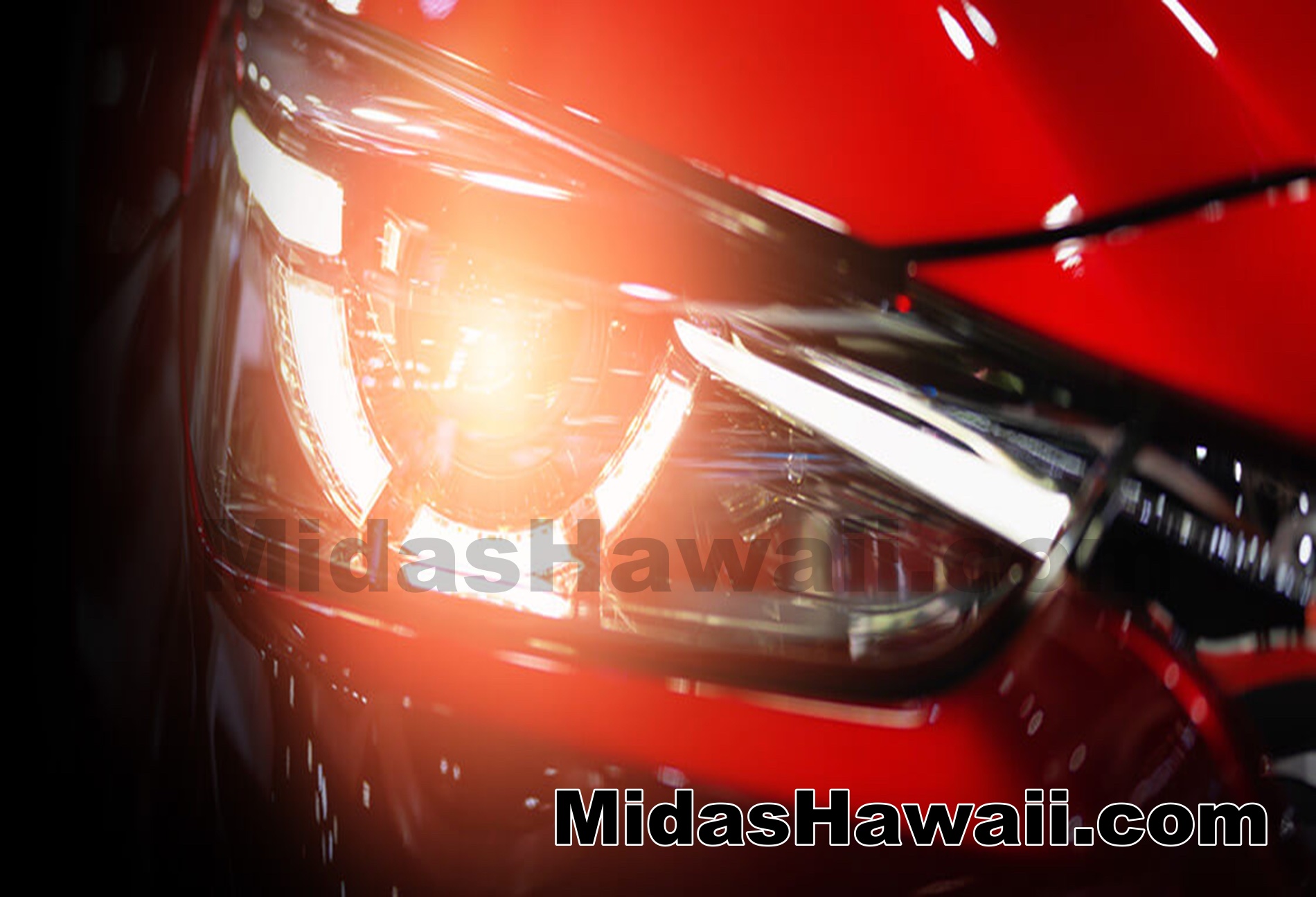Headlight Replacement
- Tweet
Back to the top
FAQ LEGEND
Back to the top
Headlight Replacement Questions
A. You hope it's this simple: an oncoming driver flashes their lights, so you check your headlights and pick up a replacement bulb. With the new bulb in place, you can see clearly again, and other drivers can see you. (With just one working headlight, other drivers can misjudge your distance from them, or mistake four-wheeled vehicles for motorcycles. With no working headlights, the hazard is even greater.)
But sometimes you can't easily reach the burned-out bulb, and sometimes the bulb isn't the problem. That's when you need a trained Midas technician to replace your bulb or diagnose your headlight problem.
A. Most headlight problems are due to burned-out bulbs, electrical problems, or issues with the charging system. Figuring out which lights are off can help narrow down the suspects:
- When one headlight stops working, it's usually the bulb. If a replacement bulb doesn't solve the problem, get the fuses and wiring checked.
- When high beams or low beams stop working, first rule out burned-out bulbs. Then have switches and relays checked.
- When both headlights stop working, the problem probably lies in the electrical system.
A. If you saw both lights go out at the same time, you almost certainly have an electrical problem. Bulbs don't usually burn out in pairs. But it's easy to miss one burned-out bulb until the other one goes out (or until another driver flashes their lights at you), so start by testing a replacement bulb.
A. If your vehicle's headlights turn on and off correctly, but aren't as bright as they used to be, the culprit could be your charging system, worn-out bulbs (headlight bulbs dim over time), or even foggy lenses. Clean your lenses, try a new bulb, and book a headlight diagnosis appointment with Midas if those easy fixes don't work out.
A. Here are the main headlight materials and technologies on the U.S. and Canadian market:
- Halogen headlights: Incandescent lights with a tungsten filament surrounded by argon and nitrogen gasses. Halogen bulbs are widely available, inexpensive, and dimmable. They also generate heat, use more energy, and burn out quicker than more advanced headlight technologies. (Non-halogen incandescent headlights are available, but used mainly in classic cars.)
- High Intensity Discharge (HID) headlights: Also called Xenon headlights, for the gas that powers these lights in much the same way neon lights work. HID lights last up to eight times as long as halogen lights, can shine up to twice as brightly, and can illuminate a larger area using less energy. They're also more expensive and can blind oncoming traffic if not installed properly and used judiciously. (HIDs can often be left on low beam where halogen lights would be switched to high beam, and some HID systems let drivers customize how much light to project.)Beware the Glare:
- HID bulbs should be installed by a trained technician like your local Midas technician. We'll ensure that your HID headlights have minimal impact on other drivers, and help you understand any custom settings on your headlight system.
- Before you install an aftermarket HID upgrade, check your local laws. Aftermarket HID kits are available, but they're illegal in some jurisdictions due to the risk of glare to other drivers. Again, talk to us at your local Midas if you're interested in HID headlights.
- LED headlights: An emerging option that balances some of the pros and cons of halogen and HID headlights. LED headlights offer better brightness and coverage than halogen, while using less energy, without the glare of HID. Unfortunately, they can also generate heat in surrounding areas (though LEDs themselves stay cool). LED headlights can cost up to five times as much as HID lights, but are designed to last tens of thousands of hours.
A. Halogen bulbs are designed to last 500-1000 hours. That's now at the lower end of vehicle headlight life expectancy. The longest-lasting headlights are LED lights, designed for up to 50,000 hours of use. HID and Xenon lights fall in the middle, lasting 2,000-8,000 hours.
To maximize the life of your headlights:
- Always wear clean gloves when changing headlight bulbs. Oil residue from your fingers can prematurely damage a headlight bulb or certain HID components.
- If possible, park in climate-controlled conditions during very hot weather. Extreme heat shortens the life of some headlights.
A. Several factors affect how often headlights should be replaced, including:
- The type of headlight: conventional incandescent, halogen, LED, or HID/Xenon
- How much your vehicle is driven after dark (and in poor-visibility weather)
- Whether you use daytime running lights (always-on headlights)
You should replace your headlights when you notice a loss of brightness, or when they're approaching the end of their designed life expectancy. Want to do the math with your headlight choice? Start with an average American driving time of almost 300 hours per year.
ref no:34706
Please send questions about this website to webmaster
Terms of Use / Legal Disclaimer / Privacy Statement
Site Designed and Managed by MacBusiness Consulting

